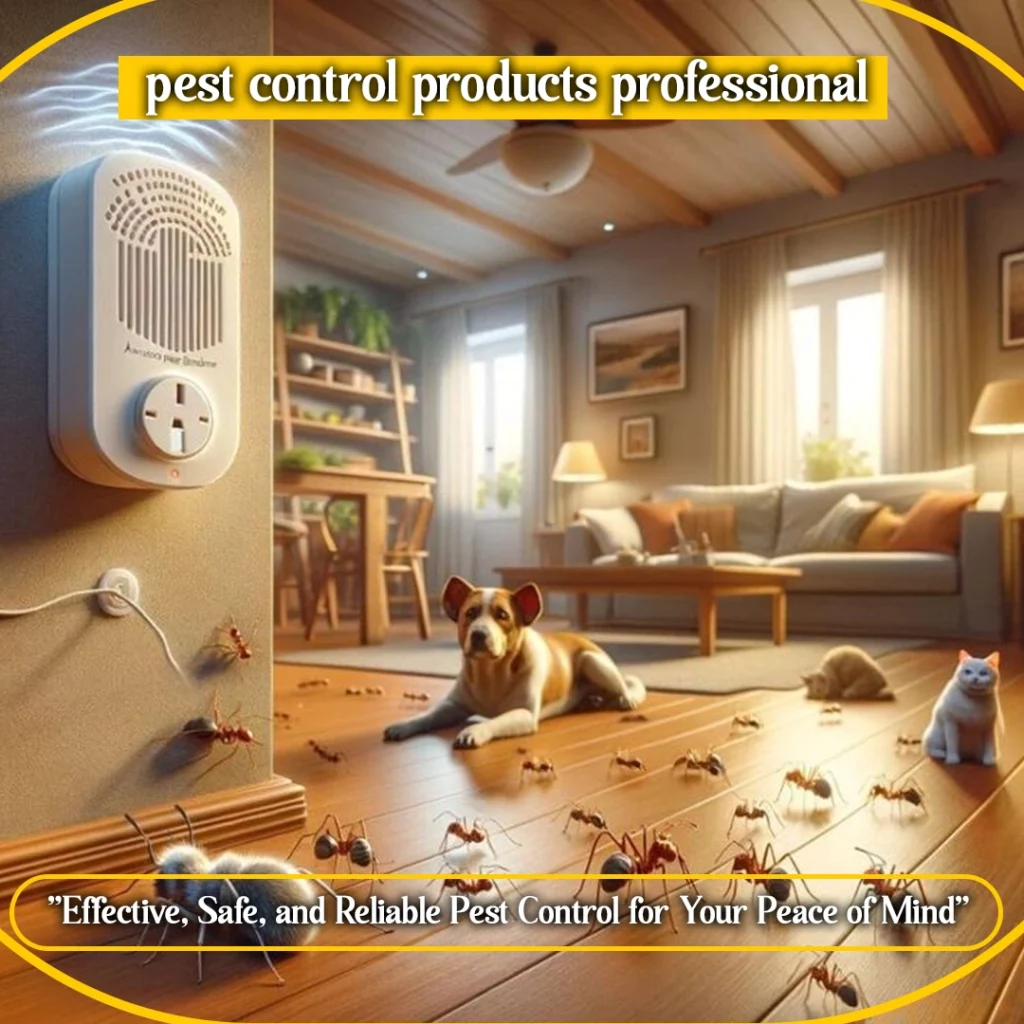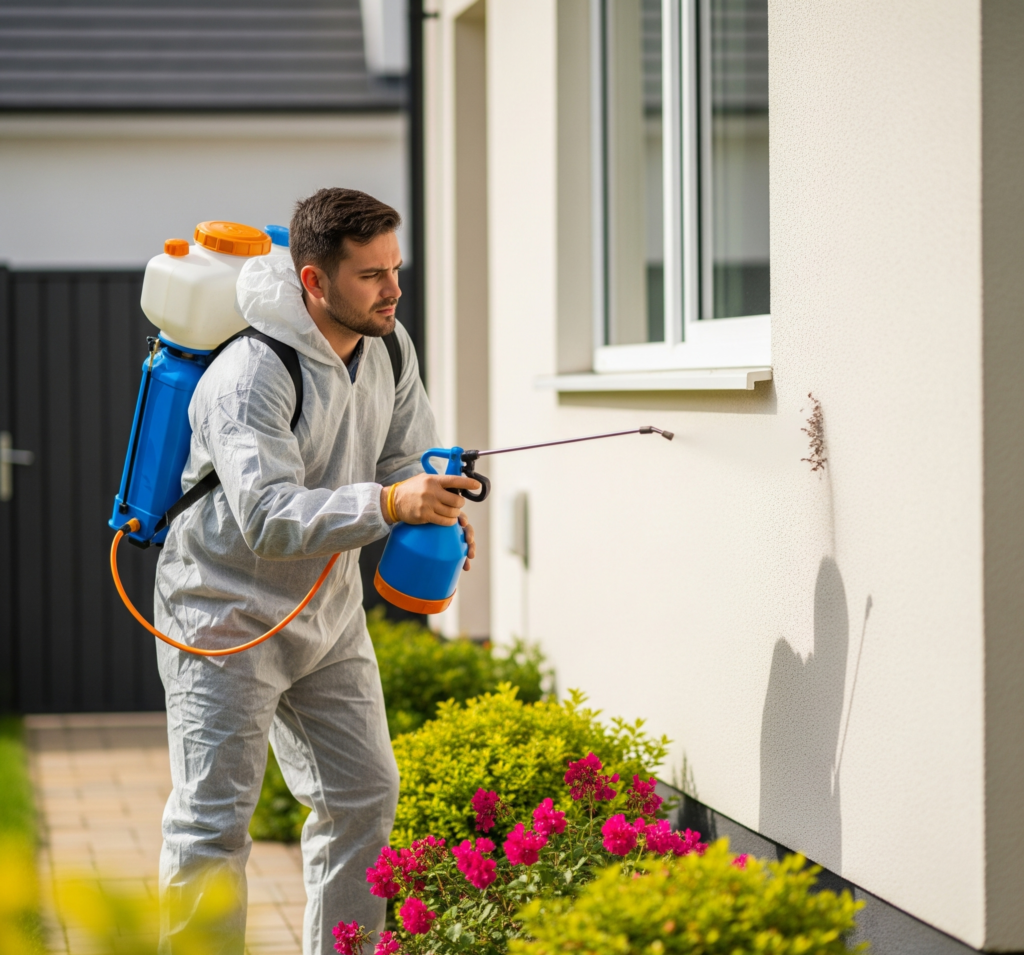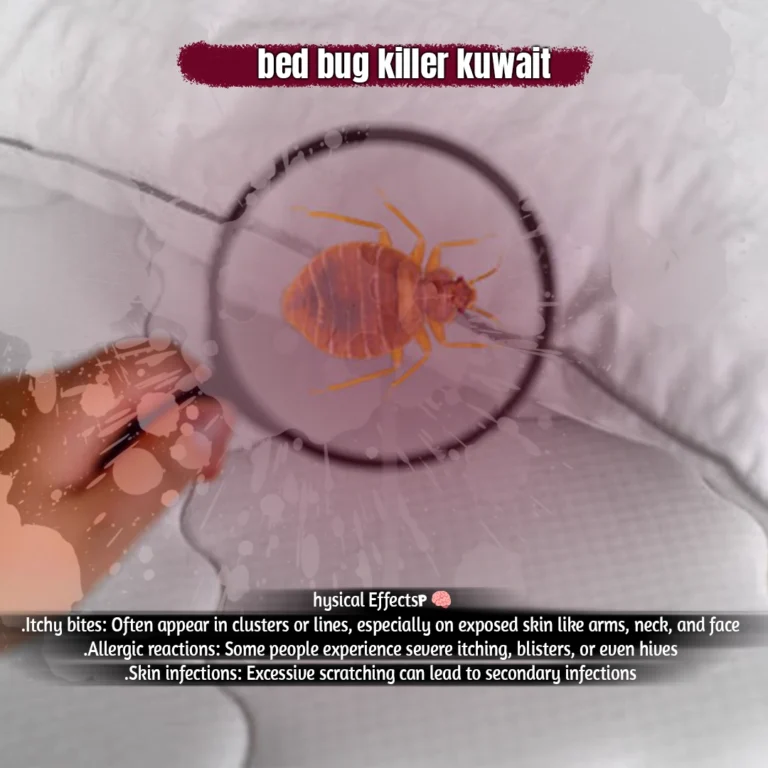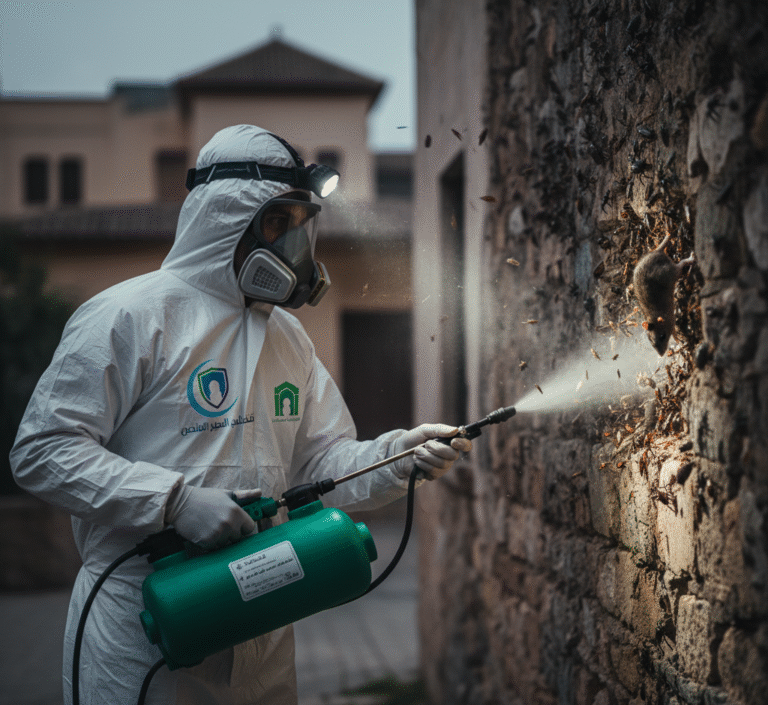pest control products professional which is notorious for its rapid reproduction rate and ability to survive in various environments. Rodents, such as the house mouse and the common rat. , are also prevalent, often invading homes and businesses in search of food and shelter. Additionally, termites pose a serious risk to wooden structures, leading to potential economic detriment. Furthermore, mosquitoes are a considerable concern as they can transmit diseases to humans, making timely pest control critical . Contact us 98949693.
Introduction to Professional Pest Control Products
Professional pest control products play a crucial role in maintaining pest-free environments in both residential and commercial settings. Their efficacy surpasses that of typical over-the-counter options, making them essential for those seeking comprehensive solutions to pest problems. These specialized products are designed to effectively target a wide array of pests, including insects such as ants, cockroaches, and termites, as well as rodents like rats and mice.
The importance of using professional pest control products cannot be overstated. They are formulated with advanced technology and ingredients that ensure optimal results while minimizing environmental and health risks. Unlike conventional pest deterrents found in retail stores, professional-grade products require specialized knowledge for safe application and management. This expertise is critical to ensure that pest control measures are both effective and safe for humans, pets, and non-target wildlife.
One of the key advantages of employing professional pest control products is their ability to penetrate the behavior patterns of various pests. Technicians trained in pest management employ these products in conjunction with established IPM (Integrated Pest Management) practices, which prioritize sustainable and environmentally responsible methods. This holistic approach allows for better long-term control of pest populations while reducing the likelihood of pesticide resistance, a common problem when using generic, over-the-counter products.
Additionally, professional pest control providers continuously monitor and evaluate pest activity, adapting their strategies and product use as necessary. This adaptiveness underscores the need for ongoing professional oversight, which ensures that pest control solutions remain effective and relevant to evolving pest behaviors.
Types of Professional Pest Control Products
Professional pest control products are essential tools in managing and eradicating pest infestations effectively. These products can be broadly categorized into several types, each tailored to address specific pest problems. Understanding the different types is crucial for selecting the right product for effective pest management.
One of the primary categories is insecticides, which are designed to eliminate insects such as ants, cockroaches, and flies. These products often contain active ingredients like pyrethroids, neonicotinoids, or organophosphates that disrupt the normal functioning of the insect’s nervous system. Application methods vary, including sprays, granules, or baits, depending on the specific insect being targeted. Additionally, careful application is vital to minimize exposure risks to humans and non-target organisms.
Another significant category is rodenticides, used to manage rodent populations such as rats and mice. These products generally contain anticoagulants or neurotoxins, which disrupt normal blood clotting processes or affect neurological function, respectively. They are available in various forms, such as blocks, pellets, and powders, and can be placed in bait stations for safe and targeted use. Following manufacturer guidelines is crucial to ensure efficacy and safety while also considering local regulations on rodent control.
pest control products professional
Ant and termite control materials represent another vital category, often incorporating specialized formulations to tackle persistent infestations. These products may include liquid termiticides or bait systems designed to eliminate colonies over time. Effective application may require drilling, trenching, or placing bait stations in critical areas where infestations are detected. Proper identification of the pest is crucial to ensure that the correct product is used for maximum effectiveness.
Lastly, traps serve as another method of pest control, designed for the capture of various pests. Sticky traps, snap traps, and electronic traps are commonly used for different pest species. Selecting the appropriate trap type can significantly enhance capturing efficiency, while placement and monitoring are essential for successful pest management. Understanding each type of product available is critical in combating pest issues effectively and ensuring long-term control solutions.

Safety Considerations When Using Pest Control Products
When it comes to utilizing pest control products, safety is of paramount importance for both professionals and homeowners. A fundamental step in ensuring safety is the thorough reading of product labels. These labels contain essential information regarding the intended use, application methods, and any necessary precautions, allowing users to understand how to utilize the product effectively while minimizing risks. Moreover, comprehending toxicity levels is crucial; this information guides the user on the potential impact of the product on humans, pets, and the environment.
Utilizing personal protective equipment (PPE) is another essential safety consideration when handling pest control products. Proper PPE, which may include gloves, goggles, masks, and protective clothing, helps create a barrier between the user and the chemicals, reducing the likelihood of exposure. Ensuring that all individuals applying pest control products are equipped with the appropriate PPE safeguards their health and well-being during the application process.
Proper storage and disposal methods are also critical components of safe pest control product usage. These products should be stored in their original containers in a cool, dry location, out of reach of children and pets. In addition, adhering to disposal guidelines to prevent environmental contamination is vital. Unused or expired products should be disposed of according to local hazardous waste regulations to mitigate potential hazards.
Improper use of pest control products can lead to serious health risks and environmental damage. Therefore, training and certification for professionals in the pest control field are essential. Certified individuals are equipped with the necessary knowledge and skills, allowing them to apply products safely and effectively while adhering to regulatory standards. By prioritizing these safety considerations, both professionals and homeowners can ensure a more responsible approach to pest management.
The Role of Professionals in Pest Control
Professional pest control services play a crucial role in effectively managing pest infestations, ensuring that properties remain free from unwanted pests. Certified pest control technicians bring a wealth of expertise and training, allowing them to identify not only the pests present but also the underlying issues contributing to infestations. Their knowledge encompasses the behaviors, biology, and environment of various pests, which is essential for developing targeted treatment strategies.
One of the key benefits of hiring professionals over DIY methods is the access to professional-grade pest control products. While many consumers might resort to off-the-shelf solutions, these typically lack the potency or specificity required to address particular pest issues comprehensively. Professionals have access to products that are not only more effective but also safer when applied by trained individuals. They are skilled in the application of these products, understanding how to maximize efficacy while minimizing risks associated with chemical exposure to humans and pets.
Furthermore, professionals conduct thorough inspections to assess the extent of the infestation and identify potential entry points and conducive conditions that may attract pests. This comprehensive approach leads to more sustainable pest control solutions rather than merely addressing visible signs of infestation. Engaging with a professional pest control service also offers long-term advantages, as technicians can implement preventive measures that deter future invasions. This ongoing management solidifies a pest-free environment, proving to be more cost-effective in the long run compared to repeated DIY attempts.
In summary, the expertise that professional pest control services provide is unparalleled. From effective treatment implementation to ensuring safety and longevity of pest management strategies, they are vital in combatting pest issues efficiently and effectively.
Types of Pest Control Sprays
The market offers a diverse range of professional pest control sprays, each designed to tackle specific pests and plant issues effectively. The primary categories include insecticides, herbicides, and fungicides, distinguished by their active ingredients and intended use. Understanding these categories can help consumers select the appropriate product for their pest management needs.
Insecticides are formulated to eliminate a wide variety of insects, such as ants, roaches, and mosquitoes. Common active ingredients in insecticides include pyrethroids and neonicotinoids, which target the nervous systems of insects, leading to paralysis and death. These sprays can be either contact or systemic, with contact insecticides affecting pests upon direct application, while systemic options are absorbed by plants, providing internal protection against insect infestations.
Herbicides, in contrast, are specialized for controlling unwanted plants or weeds. They work by affecting the growth processes of plants, with some targeting broadleaf weeds while others may be selective, sparing certain garden plants. Glyphosate is a widely recognized active ingredient found in many non-selective herbicides, efficiently killing a variety of plants by inhibiting a specific enzyme pathway. When applying herbicides, it is crucial to recognize the target species to avoid unintended damage to desirable foliage.
pest control products professional
Fungicides serve as a defense against fungal infections that can harm crops, flowers, and grass. They typically include active compounds like azoles and strobilurins, which inhibit the growth and reproduction of fungi. Proper application methods vary depending on the formulation; some fungicides require preventive spraying, while others may be applied after an infection is detected. Precautionary measures should always be followed to protect humans and pets during application, including wearing protective gear and ensuring adequate ventilation.
To achieve optimal results with these pest control sprays, adherence to the manufacturer’s instructions is crucial, as is the consideration of environmental factors to minimize adverse effects. By choosing the appropriate spray type for specific pest issues, users can significantly enhance their pest management strategy.
Ready-Made Baits: A Convenient Solution
Ready-made baits have become an integral element in the field of professional pest control products, offering a straightforward and effective means of managing pest infestations. These baits are available in various forms, including gels, blocks, and liquids, each designed specifically to target certain pests. Common pests that are effectively managed with ready-made baits include ants, cockroaches, and rodents.
The functionality of these baits lies in their dual action of attraction and toxicity. They contain enticing ingredients that attract pests, leading them to consume the bait. Once ingested, the active ingredients work to poison the target pests, subsequently eliminating them and potentially impacting other pests within their colony or group due to the transfer of the poison. For example, ant baits may attract worker ants, which carry the toxic bait back to the nest, effectively impacting the queen and other ants.
When utilizing ready-made baits, it is crucial to adhere to dosage recommendations provided by the manufacturer. Proper application ensures that the bait is both safe and effective. Placement strategies also play a significant role in the success of these baits. It is advisable to position the baits in areas where pest activity is observed, such as along walls, near entry points, and other high-traffic areas. Additionally, climate factors, potential for contamination, and the specific life cycle of the targeted pest should be considered to enhance baiting success.
Ultimately, ready-made baits offer a convenient and efficient solution for a range of pest control needs. By understanding the various forms of baits, their target pests, and the best practices for use, individuals can effectively manage pest populations in their homes and businesses.
Repellents and Traps: Effective Deterrence Methods
In the realm of professional pest control, repellents and traps serve as essential tools for achieving effective pest deterrence. The selection of appropriate products is influenced by the type of pest, the degree of infestation, and the environment where control measures are implemented.
Repellents can be categorized into chemical and natural options. Chemical repellents often contain synthetic compounds designed to create a hostile environment for pests. These products work by emitting odors or chemicals that pests find unpleasant, effectively discouraging them from entering treated areas. On the other hand, natural repellents utilize ingredients derived from plants or essential oils, making them a favorable option for those seeking environmentally friendly solutions. Products containing citronella, peppermint oil, or neem oil exemplify this category and can be particularly effective against insects.
Traps function as another vital component of pest control strategies. Various types of traps include sticky traps, snap traps, and live traps, each offering distinct benefits and considerations. Sticky traps are designed to catch insects by adhering them to a sticky surface, serving both as a monitoring tool and a means of extermination. Snap traps, commonly used for rodents, provide a swift kill while being easy to set and maintain. Live traps allow for the humane capture of pests, enabling relocation rather than extermination, which can be an ethical choice for handling certain animal species.
When selecting repellents and traps, it is crucial to consider the specific pest problem. For instance, while strong chemical repellents may be effective for widespread infestations, they may not be suitable for residential settings with pets or children. Alternatively, using natural repellents might be preferred in such environments. Furthermore, understanding the habits and lifecycle of the target pest can greatly inform the choice of traps, ensuring that they are set up in optimal locations for maximum effectiveness.
Environmentally Friendly Pest Control Products
As concerns about chemical pesticide exposure and environmental degradation continue to rise, the demand for environmentally friendly pest control products has gained significant traction. Today, consumers increasingly seek safer alternatives that minimize health risks while effectively managing pest populations. This shift toward organic and green solutions reflects a broader awareness of sustainable practices that benefit both human health and the ecosystem.
Among the various natural pest control methods, diatomaceous earth stands out as a powerful option. This finely ground powder, composed of the fossilized remains of tiny aquatic organisms, acts as a mechanical insecticide, damaging the exoskeletons of pests such as bed bugs, cockroaches, and ants. Its effectiveness, combined with its non-toxic nature, makes it a favored choice for environmentally conscious consumers.
Essential oils are another promising avenue in green pest management. Oils derived from plants, such as peppermint and lavender, possess natural insect-repelling properties. These oils can be used alone or mixed with carrier substances to create effective sprays that deter unwanted pests. Additionally, plant-based insecticides have gained popularity due to their lower toxicity levels and biodegradable qualities, offering a safer alternative to conventional chemical pesticides.
The effectiveness of these eco-friendly products often raises questions in comparison to traditional chemical solutions. Although organic pest control methods may require more frequent applications and proactive strategies, many studies suggest that when used properly, they can adequately manage pest problems without compromising safety or environmental integrity.
Integral to the success of eco-friendly pest control is the practice of integrated pest management (IPM). This approach emphasizes the use of a combination of biological, cultural, and mechanical methods alongside environmentally sustainable techniques. By prioritizing prevention and using natural solutions, IPM promotes long-term pest control while safeguarding human health and the environment.
Understanding the Importance of Quality
When selecting professional pest control products, it is crucial to prioritize quality. High-quality products are not only more effective at eliminating pests but also minimize risks associated with health and safety. Products with international accreditation demonstrate adherence to strict standards, ensuring they can effectively manage pest issues while remaining safe for both human health and pets.
Evaluating Safety Standards
Safety should be a top consideration when choosing pest control solutions. Look for products that carry certifications from recognized health agencies. These certifications affirm that the products have undergone rigorous testing and are deemed safe for use in residential and commercial environments. Make sure to read labels and product descriptions to ensure that they explicitly state their safety for both humans and pets.
Assessing Long-Term Effectiveness
Beyond immediate effects, it’s essential to evaluate the long-term effectiveness of pest control products. Some solutions may provide quick fixes but can fail to prevent future infestations. Thus, selecting products designed for sustained efficacy is key. Check for reviews and endorsements that speak to their long-lasting results in pest management. Remember, the right choice combines quality, safety, and effectiveness to deliver a comprehensive solution to your pest problems.
Introduction to Home and Professional Products
When it comes to choosing between home and professional products, understanding the differences in formula strength, effectiveness, and cost versus results becomes crucial. Many consumers often wonder if they should invest in more expensive professional products or stick to what can be found at home. This article will unpack these differences to help you make an informed decision.
Formula Strength and Effectiveness
One of the biggest contrasts between home products and professional alternatives is the formula strength. Professional products are typically formulated with higher concentrations of active ingredients, resulting in greater effectiveness. For example, in cleaning solutions, professionals often use industrial-grade formulas that tackle stubborn stains and dirt more efficiently than typical home products.
On the other hand, home products are designed for user-friendliness and safety, making them suitable for everyday use. Though they may not be as potent as their professional counterparts, many home formulas are effective for routine tasks and can achieve satisfactory results without overwhelming the user.
Cost versus Results: Making the Right Choice
Cost is another critical factor when comparing home and professional products. Generally, professional products come at a higher price point due to their formulation and effectiveness. However, consumers must assess whether the increased cost translates into better results that justify the investment.
In some cases, using professional products can lead to long-term savings by delivering results that last longer, reducing the need for frequent applications. Conversely, home products are more affordable and accessible, making them a practical choice for everyday cleaning tasks.
In conclusion, evaluating the formula strength, effectiveness, and cost versus results will help you decide between home and professional products. Choose wisely based on your specific needs and budget.
Understanding Pest Control Products
Pest control products are essential tools for managing unwanted insects and rodents. However, understanding the correct usage and storage of these products is vital to ensure safety, particularly for children and pets. In this post, we will explore safe application methods and storage instructions.
Correct Application Methods
When using pest control products, always read and follow the label instructions carefully. This ensures that you apply the products effectively while minimizing risks. Use appropriate protective gear such as gloves and masks to safeguard against any potential exposure. Additionally, it’s wise to choose application methods that limit access to treated areas by children and animals until the product is fully dry and safe.

Precautions for Safety
To protect your children and pets during pest control activities, consider timing your applications when they are away from home. Always store pest control products in a locked cabinet or high shelf that is out of reach of children and animals. It’s also beneficial to keep these products in their original containers with labels intact, which provides essential safety information. By taking these precautions, you can use pest control products effectively while ensuring a safe environment.
Introduction to Modern Pest Control
The pest control industry is rapidly evolving with the introduction of smart and sustainable products. Today’s pest control solutions not only prioritize effectiveness but also focus on environmental safety and precision. The integration of cutting-edge technologies is transforming how we approach pest management.
Innovative Precision Spraying Technologies
One of the key advancements in pest control is the development of precision spraying technologies. These innovations enable targeted application methods, significantly reducing chemical usage while enhancing effectiveness. For instance, drone-assisted spraying allows for highly accurate distribution, ensuring that products are applied only where needed. This not only minimizes the impact on non-target organisms but also promotes overall sustainability in pest management.
The Rise of Biological Solutions
Another trend gaining momentum is the adoption of biological solutions in pest control. These eco-friendly alternatives use natural organisms to combat pest populations, reducing reliance on synthetic chemicals. By leveraging the natural life cycles of pests’ predators or parasites, biological solutions provide a sustainable approach to managing pest issues. This method aligns with the growing consumer demand for products that are both effective and environmentally conscious.
As we move forward, the pest control sector is set to benefit from continuous innovation. From precision spraying technologies to biological solutions, the focus on smart and sustainable products is reshaping the landscape of pest management. Embracing these advancements not only addresses immediate pest challenges but also contributes to long-term environmental health.
Introduction to Home Maintenance
Maintaining effective results in any home environment requires proactive measures. Whether you’ve recently used preventative products or merely want to enhance your living space’s longevity, a plan is essential. Here, we share tips on regular cleaning, sealing openings, and scheduling checkups to achieve the best outcomes.
Regular Cleaning for Optimal Results
One of the fundamental tips for maintaining your home’s effectiveness involves regular cleaning. Thoroughly cleaning surfaces helps to remove dust and debris that can lead to the deterioration of your home’s condition. Implement a cleaning schedule that focuses on high-traffic areas and often-neglected spots. This will not only provide a safer environment but also enhance the effectiveness of any preventative treatments you’ve applied.
Sealing Openings: Preventative Measures
Another effective preventative measure is sealing any openings in your home. Gaps around doors, windows, and other entry points can invite unwanted pests and air leaks, affecting your home’s integrity and efficiency. Use appropriate materials such as caulk or weather stripping to seal these openings. This simple action will contribute significantly to maintaining your home’s results over time.
Schedule Regular Checkups
Lastly, scheduling regular checkups for your home can help ensure that it remains in optimal condition. Regular evaluations by professionals can pinpoint potential issues before they escalate into costly repairs. Whether it’s an annual inspection or seasonal checks, these routine measures can help sustain effective results and prevent long-term damage.
Understanding the Severity of Infestations
Pest infestations can range from mild to severe, and while many homeowners attempt to manage minor issues on their own, there are specific situations where calling a pest control professional becomes essential. If you encounter a severe infestation that seems uncontrollable, this is one clear indicator that it might be time to seek professional help. These professionals can pinpoint the root of the problem and implement effective solutions that DIY methods may not resolve.
Dangerous Insect Species Present
Another crucial factor to consider is the presence of dangerous insect species in your home. Insects such as wasps, scorpions, and certain types of spiders can pose significant health risks to you and your family. If you notice these pest species, it’s crucial to avoid attempting to deal with them yourself. A professional pest control service is trained to handle hazardous situations safely, ensuring the elimination of the threat without putting yourself or others at risk.
Need for Advanced Treatment Methods
Even if you are using professional-grade products for pest control, there are scenarios where advanced treatment methods are necessary. Professionals have access to specialized treatments that are not available over-the-counter. If you’ve slogged through a systematic approach with limited success, it could indicate the need for more advanced pest management techniques that professionals are equipped to handle. Their expertise can lead to a comprehensive solution that tackles your pest issues effectively.
bed bug killer
bed bug killer are one of the most persistent and frustrating household pests, capable of spreading quickly and causing sleepless […]
cockroach killer
Cockroach killer are among the most annoying and dangerous insects to health, due to their ability to transmit diseases and reproduce […]
rodents
rodents 🐀 Introduction to Rodent Control in Kuwait Rodents are among the most troublesome insects and animals that cause. significant […]
Pest Control Al-Andalus
Pest Control Al-Andalus We offer you the. best services to remove panic from the home, family, elderly and children. We have […]
Pest Control Al Firdous
Pest Control Al Firdous We offer you the. best services to remove panic from the home, family, elderly and children. We have […]
Pest Control Al-Masayel
pest control Al-Masayel We offer you the. best services to remove panic from the home, family, elderly and children. We have a […]





